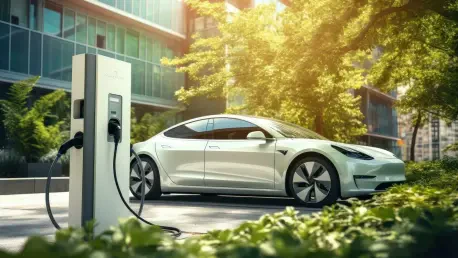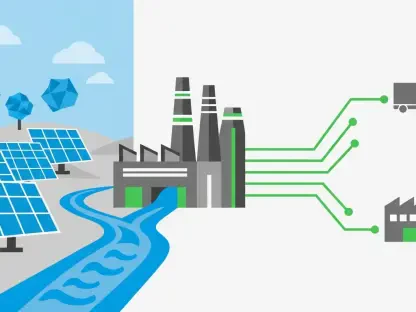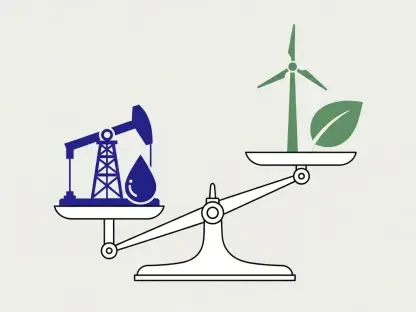The electric vehicle (EV) market in Europe is undergoing a significant transformation, accelerated by the region’s plans to phase out fossil-fuel cars by 2035. This shift introduces both opportunities and challenges for traditional automakers like Volvo, whose heritage lies in innovation and safety. As Chinese EV manufacturers increase their presence in Europe, Volvo must refine its strategies to maintain competitiveness. Recent discussions at industry levels pinpoint the pivotal role charging infrastructure will play, highlighting the need for widespread accessibility across European countries to support ambitious EV adoption targets and tackle the challenges posed by softening emissions standards.
Responding to Emissions Regulations and Environmental Targets
Balancing Benefits and Setbacks of Emission Standards
Volvo has navigated the evolving landscape of European emissions regulations, which now permit manufacturers to average their emissions over a three-year period. These softened targets bring both advantages and setbacks. Historically, Volvo has capitalized on selling credits from its low-emission fleet, thus enhancing its competitive edge. However, the delay in implementing stringent standards could potentially undermine this advantage, necessitating a reassessment of its strategies and positioning in the market. The altered regulations also offer Volvo a chance to optimize production processes and innovate its vehicle line-ups, focusing on achieving high efficiency without compromising on design and functionality, aspects that are core to Volvo’s identity.
Local Production as a Strategic Response
Volvo CEO Håkan Samuelsson emphasizes the importance of localized production as an approach to counteract tariffs and reduce transport costs while enhancing delivery efficiencies. By manufacturing models like the EX30 in Belgium and amplifying production capabilities in South Carolina, Volvo can minimize emissions tied to logistics and provide a quicker, more streamlined service to European consumers. This localized production strategy not only reinforces logistical advantages but also aligns with consumer demands for regionally tailored products. This approach to reducing delivery times helps Volvo compete effectively against the influx of Chinese EVs, fostering a positive consumer experience and preserving brand loyalty.
Aligning Products with Regional Preferences
Innovating through Market-Specific Features
In its effort to remain competitive against burgeoning Chinese EV brands, Volvo recognizes the significance of aligning its products with specific regional preferences. Samuelsson notes the necessity of introducing advanced technological features that cater to local market demands, particularly in China, where there is an appetite for sophisticated tech-driven enhancements. To this end, Volvo adopts a strategy of product development in collaboration with local markets, eschewing mere adjustments to existing European models. This means prioritizing consumer feedback, cultural insights, and technological trends specific to each region when conceptualizing new models or updating existing ones, ultimately ensuring that Volvo vehicles resonate with varied consumer bases.
Enhancing Infrastructure to Support EV Transition
Infrastructure development is another critical factor that influences Volvo’s competitive standing in Europe. Although some countries like Norway have led on this front, Volvo stresses the need for comprehensive charging networks across all EU nations to facilitate EV adoption and meet environmental targets. Enhancing infrastructure not only supports electrification but also bolsters consumer confidence in switching to EVs. This drive toward infrastructure expansion complements Volvo’s emphasis on delivering EVs tailored to local needs, effectively blending modern technology with practical consumer advantages. Promoting stable, extensive charging facilities is key to easing user concerns and promoting the seamless integration of EVs into daily life.
Embracing Flexibility and Innovation
Strategic Flexibility in the Face of Competition
Volvo’s response to increased competition from Chinese EV manufacturers underscores a commitment to strategic flexibility and technological innovation. Embracing competition involves not only meeting consumer expectations but also reinventing one’s approach to production, distribution, and market engagement. This includes adopting flexible strategies that are responsive to consumer expectations, thereby ensuring product relevance amid various consumer needs across Europe. Additionally, pursuing innovative advancements in EV technology and enhancing charging infrastructures are paramount to facilitating a smooth transition to an all-electric vehicle lineup, coupled with tailored offerings that support the diverse demands across different European markets.
Delivering Tailored Solutions in Evolving Markets
The European electric vehicle (EV) sector is witnessing a major transformation as the region gears up to eliminate fossil-fuel cars by the year 2035. This pivotal transition presents both prospects and obstacles, especially for established automakers like Volvo, which is traditionally rooted in innovation and safety. The rise in influence of Chinese EV producers in the European market means that Volvo must revise its strategy to remain competitive. Discussions among industry leaders stress the essential role of charging infrastructure, underscoring the necessity for widespread accessibility across European nations to not only meet ambitious EV adoption goals but also to address the issues arising from the relaxation of emission standards. This shift also aligns with broader environmental goals, creating a renewed focus on sustainable practices and the evolution of the transportation landscape, as stakeholders emphasize collaboration to overcome these challenges and foster growth in the rapidly evolving EV market.









